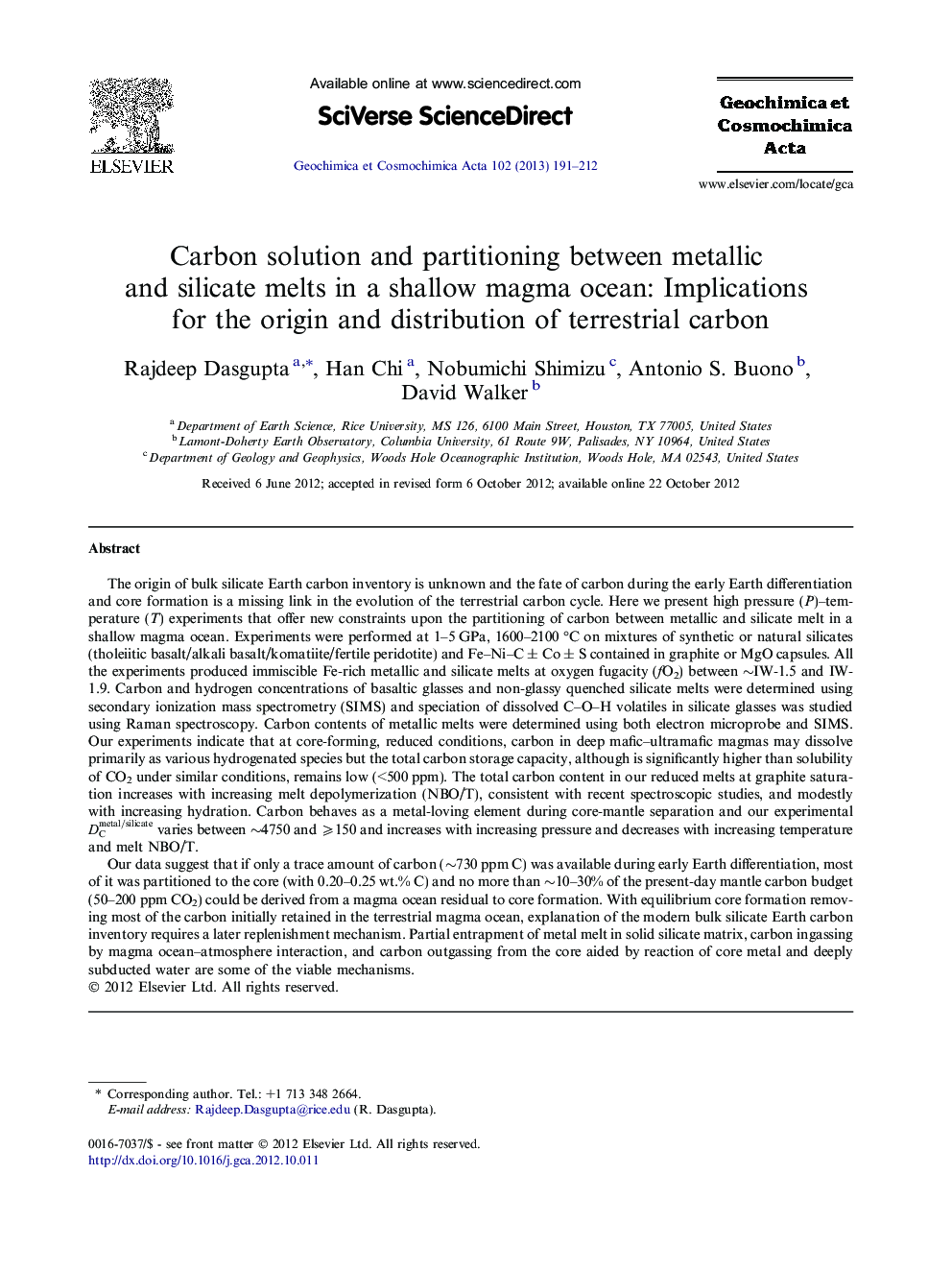| کد مقاله | کد نشریه | سال انتشار | مقاله انگلیسی | نسخه تمام متن |
|---|---|---|---|---|
| 4702577 | 1638055 | 2013 | 22 صفحه PDF | دانلود رایگان |
The origin of bulk silicate Earth carbon inventory is unknown and the fate of carbon during the early Earth differentiation and core formation is a missing link in the evolution of the terrestrial carbon cycle. Here we present high pressure (P)–temperature (T) experiments that offer new constraints upon the partitioning of carbon between metallic and silicate melt in a shallow magma ocean. Experiments were performed at 1–5 GPa, 1600–2100 °C on mixtures of synthetic or natural silicates (tholeiitic basalt/alkali basalt/komatiite/fertile peridotite) and Fe–Ni–C ± Co ± S contained in graphite or MgO capsules. All the experiments produced immiscible Fe-rich metallic and silicate melts at oxygen fugacity (fO2) between ∼IW-1.5 and IW-1.9. Carbon and hydrogen concentrations of basaltic glasses and non-glassy quenched silicate melts were determined using secondary ionization mass spectrometry (SIMS) and speciation of dissolved C–O–H volatiles in silicate glasses was studied using Raman spectroscopy. Carbon contents of metallic melts were determined using both electron microprobe and SIMS. Our experiments indicate that at core-forming, reduced conditions, carbon in deep mafic–ultramafic magmas may dissolve primarily as various hydrogenated species but the total carbon storage capacity, although is significantly higher than solubility of CO2 under similar conditions, remains low (<500 ppm). The total carbon content in our reduced melts at graphite saturation increases with increasing melt depolymerization (NBO/T), consistent with recent spectroscopic studies, and modestly with increasing hydration. Carbon behaves as a metal-loving element during core-mantle separation and our experimental DCmetal/silicate varies between ∼4750 and ⩾150 and increases with increasing pressure and decreases with increasing temperature and melt NBO/T.Our data suggest that if only a trace amount of carbon (∼730 ppm C) was available during early Earth differentiation, most of it was partitioned to the core (with 0.20–0.25 wt.% C) and no more than ∼10–30% of the present-day mantle carbon budget (50–200 ppm CO2) could be derived from a magma ocean residual to core formation. With equilibrium core formation removing most of the carbon initially retained in the terrestrial magma ocean, explanation of the modern bulk silicate Earth carbon inventory requires a later replenishment mechanism. Partial entrapment of metal melt in solid silicate matrix, carbon ingassing by magma ocean–atmosphere interaction, and carbon outgassing from the core aided by reaction of core metal and deeply subducted water are some of the viable mechanisms.
Journal: Geochimica et Cosmochimica Acta - Volume 102, 1 February 2013, Pages 191–212
